Contents
Probably every summer resident dreams that sweet raspberries grow on his plot. This fragrant berry is widely used in cooking, and if you take into account its beneficial properties, then the bottom culture becomes completely indispensable. Below we will present you all the secrets of growing raspberries at home, tell you about the features of seed germination, consider the possibility of using a greenhouse and understand the intricacies of caring for raspberry plantings. Growing raspberries, like any other garden crop, is a laborious but entertaining process.
How to choose a place
First of all, it is necessary to deal with the soil and suitable conditions for the growth of raspberries, because future bushes will have to live in one place for about 10-12 years. Experienced experts recommend picking up plots along the hedges, as the culture gives a lot of overgrowth. Also try to pick up flat areas with a minimum slope and good drainage.
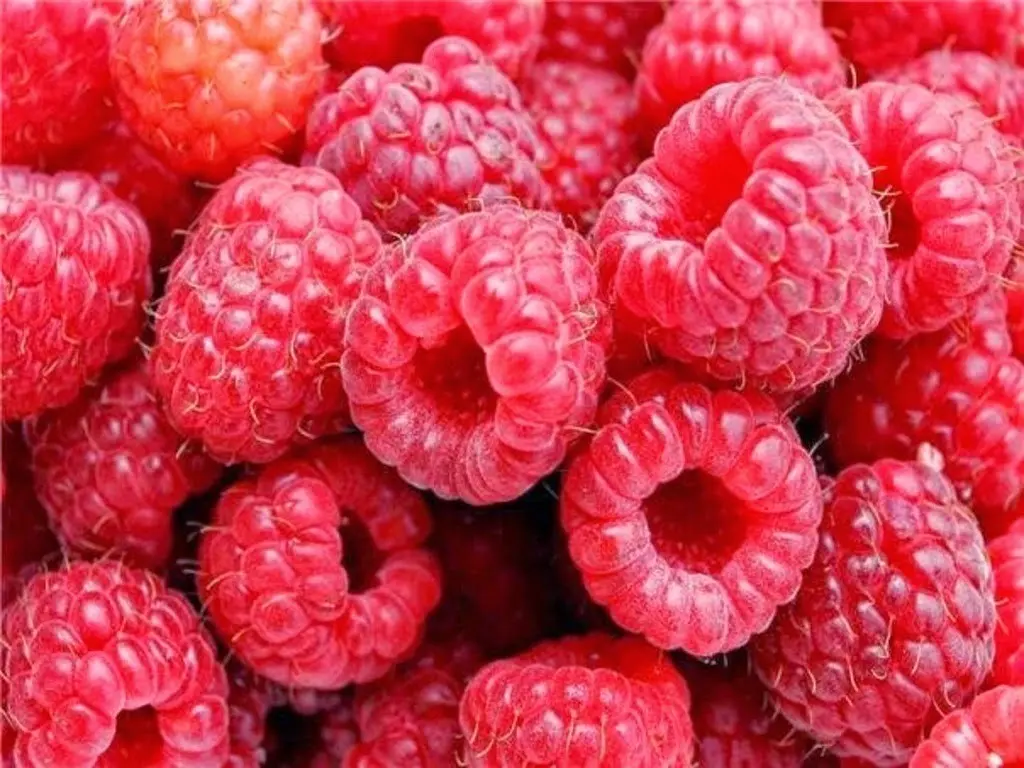
Raspberries do not tolerate excess moisture, so avoid places where there is a risk of stagnant water. This plant loves sunlight. In shaded places, the berries can grow small and sour. In this case, it would be nice to provide conditions for installing the grid. It will be able to protect ripe berries from burning and premature drying out in the open. Raspberries do not tolerate drafts very well, so choose quiet and secluded places. If you are going to grow raspberries in a greenhouse, then the design must also be installed taking into account the above tips. The place should be sunny, quiet and without the risk of flooding.
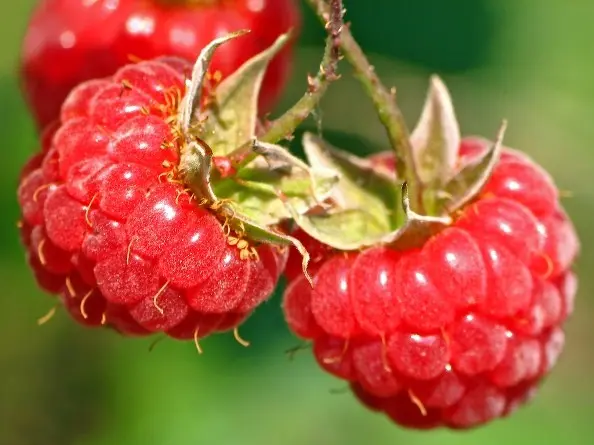
After you decide on the placement of the future raspberry, pay attention to the qualitative composition of the soil. It is recommended to start preparing the land in the fall. The soil is dug to a depth of 30 centimeters and suitable fertilizers are applied. In this case, humus or compost is perfect. From mineral dressings, potash fertilizers are used at 30-40 grams per 1 square meter of land and superphosphate at 50-60 grams per 1 square meter of planting.
Video “Repair Raspberry: Part 1”
I am planting seeds
In most cases, raspberries are planted with shoots, as they give a large number of shoots. But it is not uncommon to grow this crop from scratch, that is, from seeds. First of all, you need to prepare planting material. The easiest way is to buy ready-made seeds in a specialized store, but you can collect them yourself. To do this, you need the most ripe berries. They are rubbed gently through a sieve to remove the juice, and then the remaining pulp with seeds is ground on paper napkins and left to dry.
Try not to overdry the seeds, as they will have to germinate in the future in a humid environment. Since autumn, the seed material is laid in boxes for stratification. This procedure involves slow germination in the cold. To do this, the seeds are mixed with sand and planted in a fertile substrate to a depth of 1-2 centimeters. This procedure has been carried out since autumn. If you decide to transfer the sowing work to the spring, then the seeds must be kept on the bottom shelf of the refrigerator in a damp linen bag.
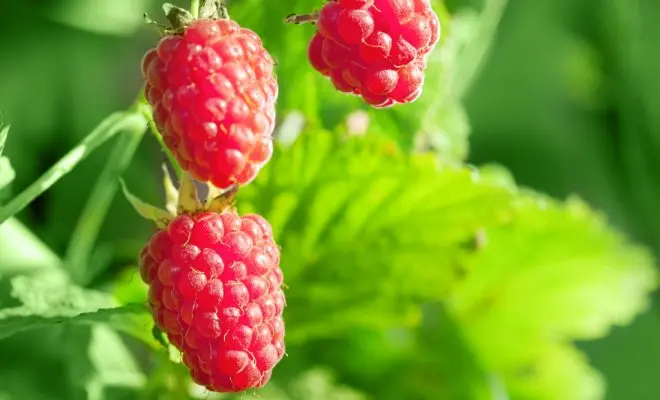
It is worth noting that the germination of raspberry seeds at home does not always bring the expected result. Often bushes grow from seedlings, giving completely different berries in size, taste and color. You should also take into account the percentage of seedlings. Seeds germinate extremely unevenly and at best you will get 50% germination. If you do everything right, then in the first year the bushes will grow up to one and a half meters and will begin to bear fruit next summer. It is necessary to weigh the pros and cons and decide on the method of propagation of raspberries – seedlings or seeds.
Care
Regardless of whether you grow raspberries in the open field or in a greenhouse, planting needs constant care. For any plant, the most important thing is watering. Raspberries are moisture-loving crops. To get a bountiful harvest, raspberries need to be watered regularly, especially if the summer turned out to be dry. But make sure that water does not stagnate on the surface. If the roots begin to sour, then you can forget about sweet and fragrant raspberries. In open areas and in greenhouses, drainage systems and removal of excess moisture should be provided.
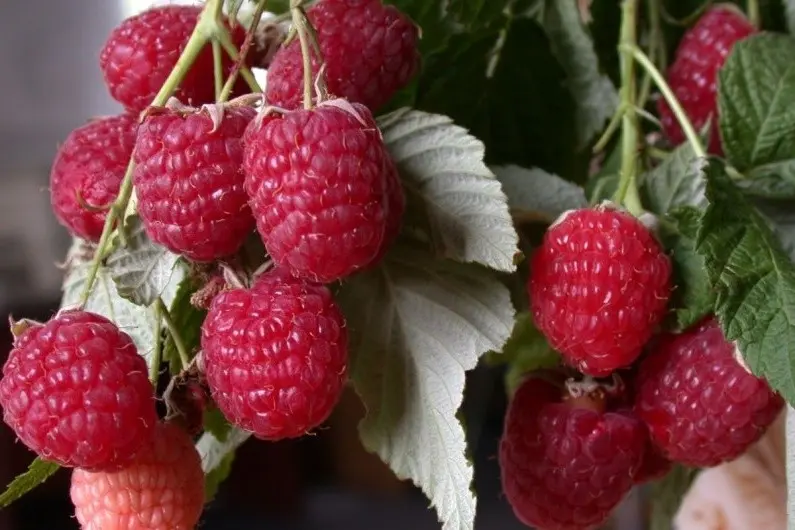
Next, we’ll talk about pruning. Raspberry bushes are famous for their active growth. They produce a large amount of new growth, and fruit-bearing branches can grow to such a size that they can no longer stand upright. All these processes must be carefully controlled, since the thickening of the planting leads to a decrease in fruiting, the settlement of pests and the development of diseases.
Weeds should be removed immediately. Fruiting shoots are pruned after harvest and in spring. Spring pruning involves the removal of frozen areas and diseased stems.
According to completely different rules, annual remontant raspberries are pruned. After harvesting in September-October, the shoots are cut completely to the very root. In the spring, new fresh stems appear. Gardeners only need to control the number of new shoots. Growing raspberries using the Sobolev method is very popular among gardeners.
He suggested double pruning the bushes. The first time the shoots are shortened in May or June by 10-15 centimeters. After that, lateral stems begin to actively grow. In autumn, you need to thin out the planting and leave 4 stems on the bush. The second stage of pruning is planned for next spring. Then the green bushes are again cut off by 10-15 centimeters, while not forgetting to remove the frozen shoots.
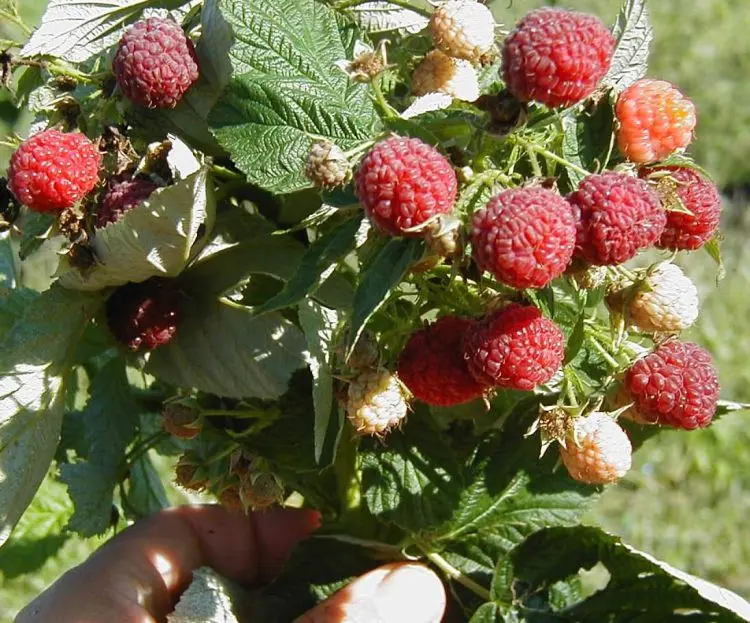
In greenhouses and on plots, it is imperative to carry out the loosening procedure. But this must be done carefully, since raspberries have fairly superficial roots. In open ground conditions, it is customary to bend bushes to the ground for the winter. The branches are tied together and pinned to the ground so that the shoots are completely covered with snow and they do not freeze.
Under the weight of berries, raspberry branches often begin to bend, so they are tied up. In greenhouses, the trellis type of garter is most common, since raspberries are most often planted in even rows there. It is also convenient to tie raspberries with a fan method. To do this, 2 sticks are driven in between the bushes and they begin to tie shoots of one or the second bush to them at different heights, forming a semblance of a fan.
During the growing season, you can make additional top dressing. Before fruiting, organic matter and nitrogen fertilizers are applied in moderation. During the ripening of berries, you can make ammonium nitrate, superphosphate, ammonium sulfate, nitrogen fertilizers. After harvesting, nitroammophoska, ammonium nitrate, superphosphate and potash fertilizers are applied.
Video “Repair Raspberry: Part 2”
From the video you will learn many useful things that will help you grow a rich and good harvest.









